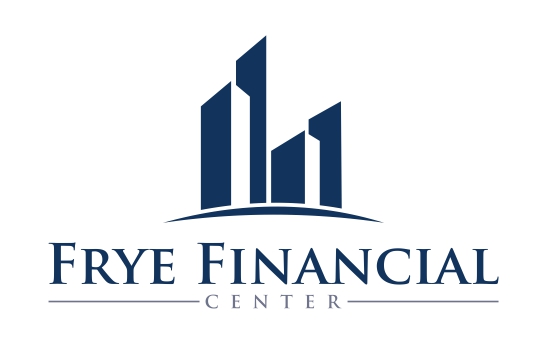Plan Sponsor Corner
Plan Sponsors’ Quarterly Calendar
It’s never too early to start planning ahead!
Check out these key dates, and give us a call if you have any questions regarding these and other items that may apply to your plan.
APRIL
• If a plan audit is required in connection with the Form 5500, make arrangements with an independent accountant/auditor for the audit to be completed before the Form 5500 due date (calendar-year plans).
• Audit first quarter payroll and plan deposit dates to ensure compliance with the Department of Labor’s rules regarding timely deposit of participant contributions and loan repayments.
• Verify that employees who became eligible for the plan between January 1 and March 31 received and returned an enrollment form. Follow up for forms that were not returned.
MAY
• Monitor the status of the completion of Form 5500 and, if required, a plan audit (calendar-year plans).
• Issue a reminder memo or email to all employees to encourage them to review and update, if necessary, their beneficiary designations for all benefit plans by which they are covered.
• Perform a thorough annual review of the Plan’s Summary Plan Description (SPD) and other enrollment and plan materials to verify that all information is accurate and current, and identify cases in which revisions are necessary.
JUNE
• Begin planning an internal audit of participant loans granted during the first six months of the year. Check for delinquent payments and verify that repayment terms and amounts borrowed do not violate legal limits.
• Confirm that Form 5500, and plan audit if required, will be completed prior to the filing deadline or that an extension of time to file will be necessary (calendar-year plans).
• Review plan operations to determine if any qualification failures or operational violations occurred during the first half of the calendar year. If a failure or violation is found, consider using an Internal Revenue Service or Department of Labor self-correction program to resolve it.
For plan sponsor use only, not for use with participants or the general public. This information is not intended as authoritative guidance or tax or legal advice. You should consult with your attorney or tax advisor for guidance on your specific situation.
Kmotion, Inc., 412 Beavercreek Road, Suite 611, Oregon City, OR 97045; www.kmotion.com © 2017 Kmotion, Inc. This newsletter is a publication of Kmotion, Inc., whose role is solely that of publisher. The articles and opinions in this publication are for general information only and are not intended to provide tax or legal advice or recommendations for any particular situation or type of retirement plan. Nothing in this publication should be construed as legal or tax guidance; nor as the sole authority on any regulation, law or ruling as it applies to a specific plan or situation. Plan sponsors should consult the plan’s legal counsel or tax advisor for advice regarding plan-specific issues.
Plan Sponsors Ask…
Q: Women are better retirement savers but still lag behind men in outcomes. What gives?
A: Indeed, there is a noteworthy imbalance in retirement wealth accumulation among men and women. Men consistently come out ahead, despite women’s superior savings behaviors.
Women are more likely to save, but men have higher account balances, according to a Vanguard white paper. Its data shows that women are 14% more likely than men to participate in their employer-sponsored retirement plan. Further, once enrolled, women save at higher rates—typically 7%-16% higher than men. Don’t “autopilot” provisions like auto-enrollment equalize things? On the participation front, yes; for savings, no. Among auto-enroll plan participants, men and women participate at similar rates, but men defer at 5% higher rates. Moreover, women are conscientious savers, and auto-enrollment provides them an advantage. Sixty percent fall into lower wage brackets than men, but lower-income individuals experience more positive impacts on savings due to auto-enrollment. What’s more, higher incomes cancel out default features. Among male Vanguard participants, average wages were 25% higher, accounting for higher contribution rates by men in auto-enroll plans. In voluntary-enroll plans, women save at 6% higher rates. Vanguard’s paper highlights a lingering income disparity between men and women and shows that American employers have more work to do to close the gender gap in retirement outcomes.
Read more at http://tinyurl.com/WomenAreBetterSavers.
Q: Many younger participants are simultaneously saving for retirement and paying off student loans. How do we help them successfully accomplish both?
A: Putting off retirement savings to pay down student loans is among the biggest financial mistakes younger workers can make.
In fact, LIMRA found that a 22-yearold with $30,000 in student loan debt could have $325,000 less in savings at retirement than his or her debt-free counterpart. So what’s a plan sponsor to do? Emphasize holistic financial well-being by:
• Encouraging DC plan participants to make the minimum monthly payments on their student loans, and also reminding them to save enough in their retirement plan to get matching contributions. According to Financial Engines, 1 in 4 employees don’t take advantage of the match, meaning they’re leaving up to $43,000 on the table over 20 years.
• Emphasizing creating an emergency fund for unforeseen expenses so they won’t be tempted to borrow from their retirement account or use credit cards.
• Advising them to direct any remaining funds strategically, either by paying down high interest student loans or investing more into their retirement portfolios and putting the money to work through compounding.
• Encouraging participants to stash that extra cash in their retirement accounts once their debt is paid off. Many experts say workers should be saving 15% of their income by age 25 to ensure a comfortable retirement.
Visit http://tinyurl.com/LIMRAStudentLoanResearch and
http://tinyurl.com/StudentDebtVsRetirement to find out more about helping workers save for retirement while paying off student loans.
For plan sponsor use only, not for use with participants or the general public. This information is not intended as authoritative guidance or tax or legal advice. You should consult with your attorney or tax advisor for guidance on your specific situation.
Kmotion, Inc., 412 Beavercreek Road, Suite 611, Oregon City, OR 97045; www.kmotion.com © 2016 Kmotion, Inc. This newsletter is a publication of Kmotion, Inc., whose role is solely that of publisher. The articles and opinions in this publication are for general information only and are not intended to provide tax or legal advice or recommendations for any particular situation or type of retirement plan. Nothing in this publication should be construed as legal or tax guidance; nor as the sole authority on any regulation, law or ruling as it applies to a specific plan or situation. Plan sponsors should consult the plan’s legal counsel or tax advisor for advice regarding plan-specific issues.
Plan Sponsors Ask…
Q. Can Participants Really Save $1 Million in Their 401(k) Plans?
A. Many participants really can save $1 million in their 401(k) plans by contributing a modest percentage of pay, if they start early, invest well, and receive regular pay raises.
Columnist Andrea Coombes came to that conclusion after tinkering with the 401(k) calculator at BankRate.com. Specifically, Coombes says a participant earning $75,000 annually and receiving 3% pay raises each year could accumulate $1 million by contributing 7.3% of pay every year for 30 years. The participant would need to get a 7% rate of return on the account and an employer match of 50% of the first 6% of contributions. A goal of $1 million in retirement savings very likely seems out of reach to many participants. Regularly communicating about saving and investing, including showing projections translated into retirement income “paychecks,” can make a difference.
Read Coombes’ MarketWatch column for more information at http://tinyurl.com/SaveMillionMktWatch.
For plan sponsor use only, not for use with participants or the general public. This information is not intended as authoritative guidance or tax or legal advice. You should consult with your attorney or tax advisor for guidance on your specific situation. Kmotion, Inc., 412 Beavercreek Road, Suite 611, Oregon City, OR 97045; www.kmotion.com ©2015 Kmotion, Inc. This newsletter is a publication of Kmotion, Inc., whose role is solely that of publisher. The articles and opinions in this publication are for general information only and are not intended to provide tax or legal advice or recommendations for any particular situation or type of retirement plan. Nothing in this publication should be construed as legal or tax guidance; nor as the sole authority on any regulation, law or ruling as it applies to a specific plan or situation. Plan sponsors should consult the plan’s legal counsel or tax advisor for advice regarding plan-specific issues.
Plan Sponsors Ask…
Q: What are some key topics to address when communicating to employees about preparing for a more successful retirement?
A: We’re glad you asked. Aon Hewitt answered this question concisely and succinctly in a fun infographic titled “Top Questions to Ask When Preparing Employees for a Financially Successful Retirement.” It illustrates four specific and critical questions to ask, including discussions on how much employees need to retire and maintain their current standard of living (11 times their final pay, on average), how much they should be setting aside for retirement (17% of pay) and more.
Click here to check out the complete infographic
Plan Sponsors Ask…
Q: We’d like to boost the contribution levels of our plan participants. We added an employer match last year, but many employees don’t contribute enough to receive the entire match. What else can we do?
Knowledge vs. Action: The Disconnect
Knowledge and action are not always aligned, and a new study demonstrates such a misalignment for retirement savers. According to the study, Americans are generally behind in terms of retirement readiness, particularly falling short in figuring out how to save.






